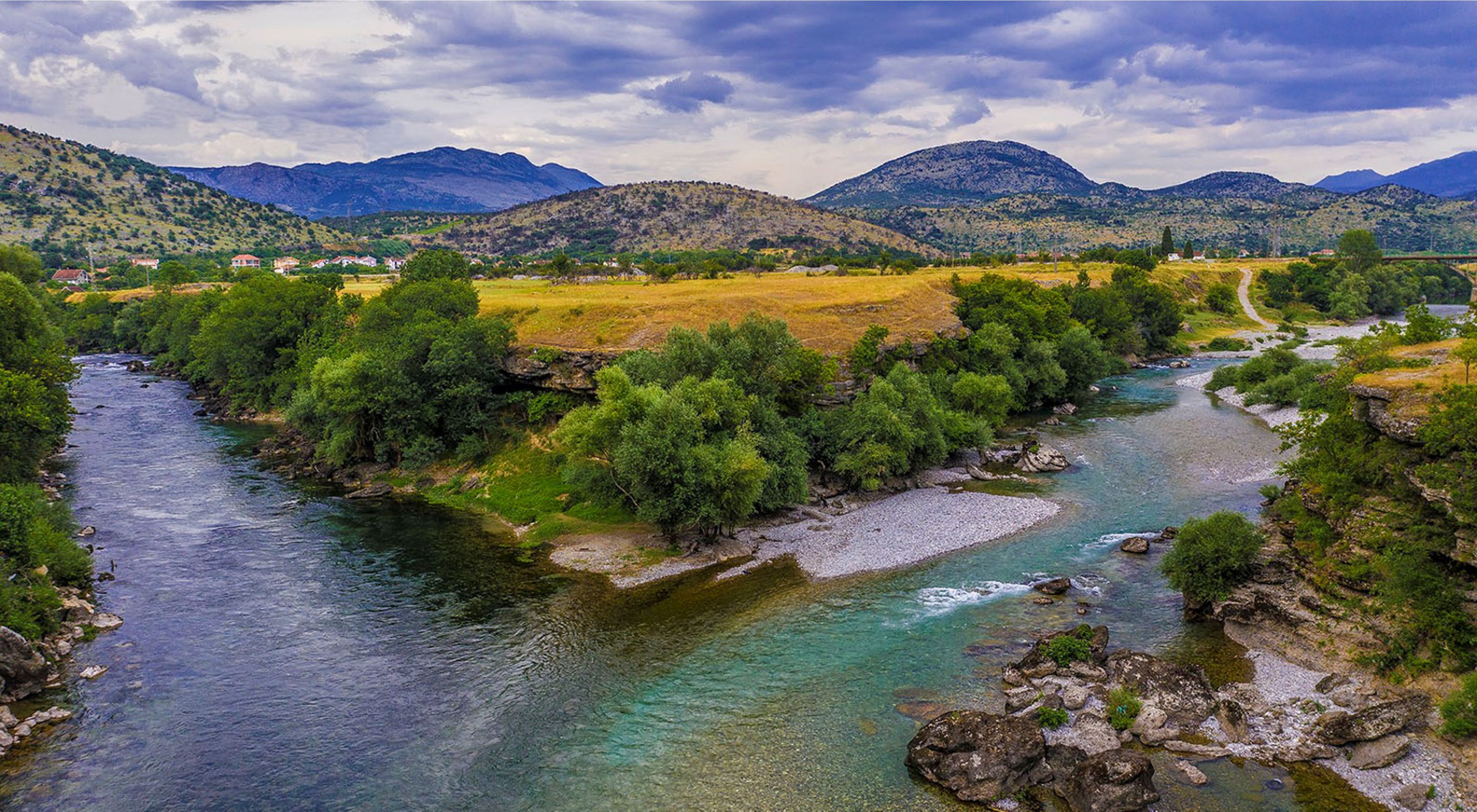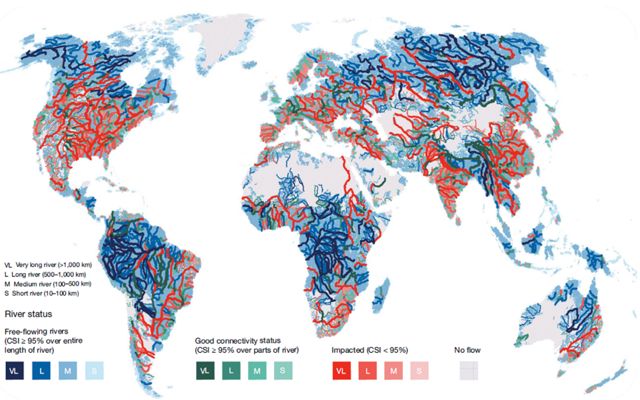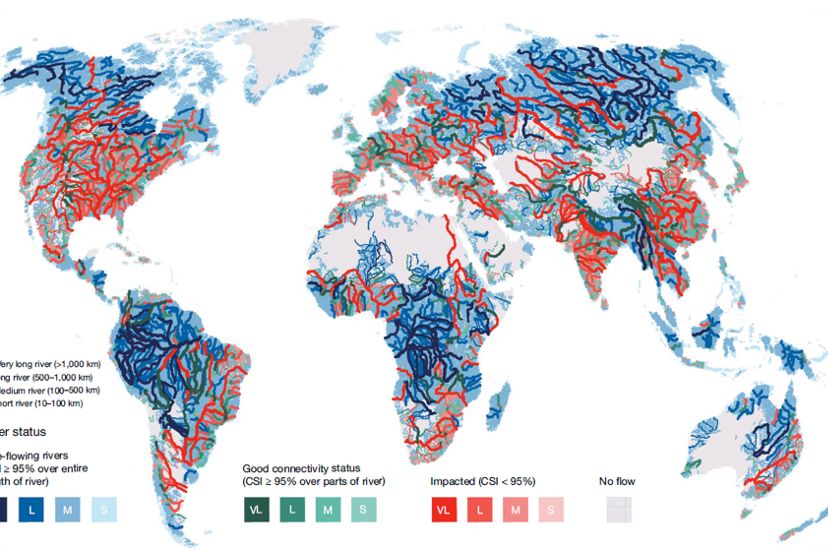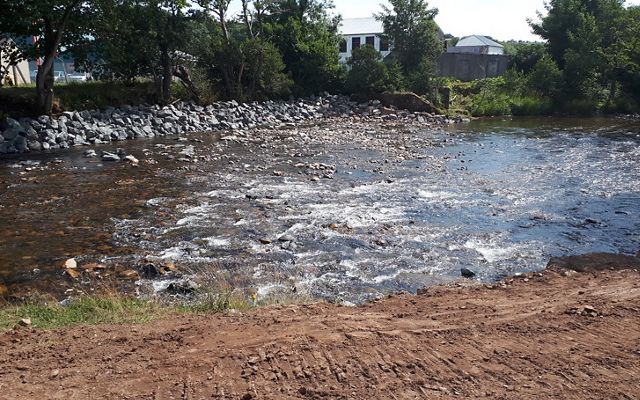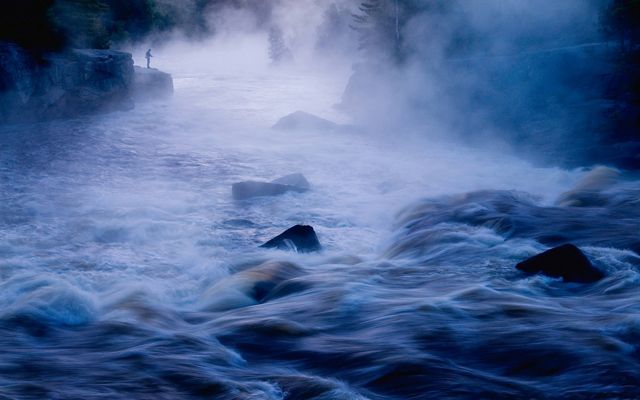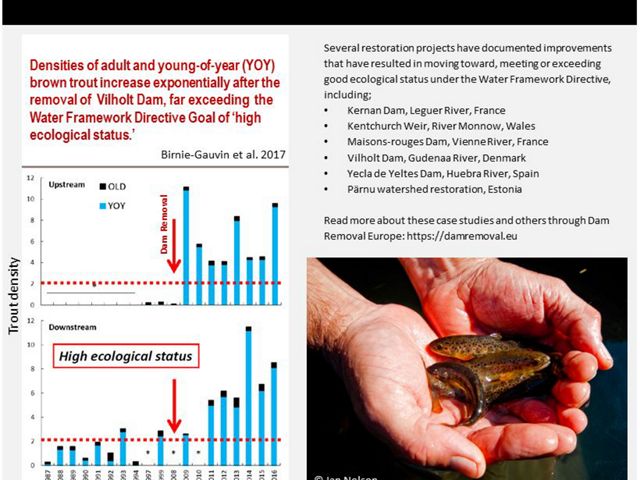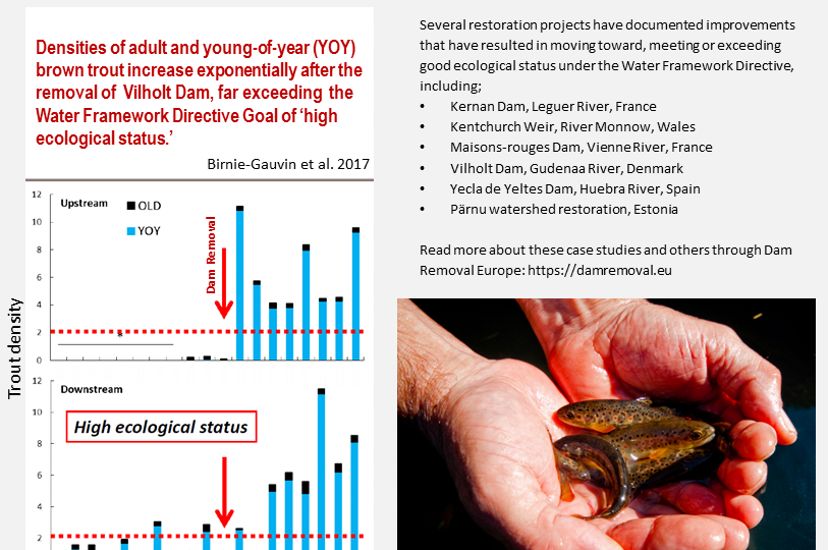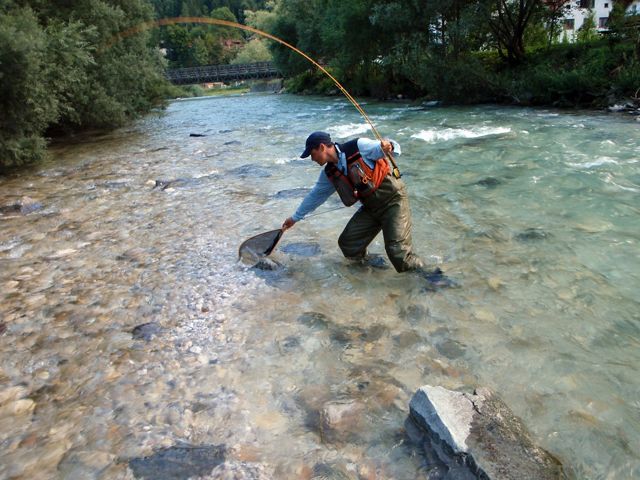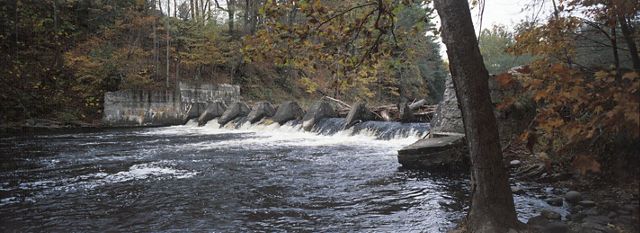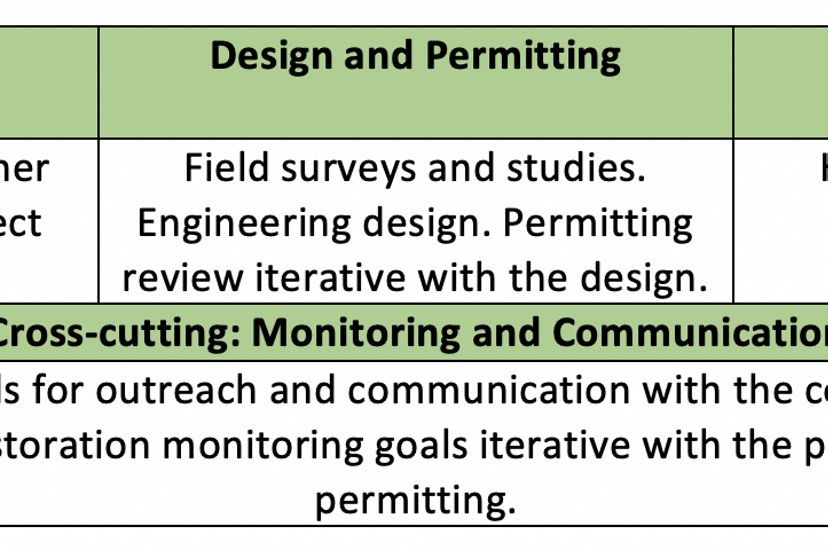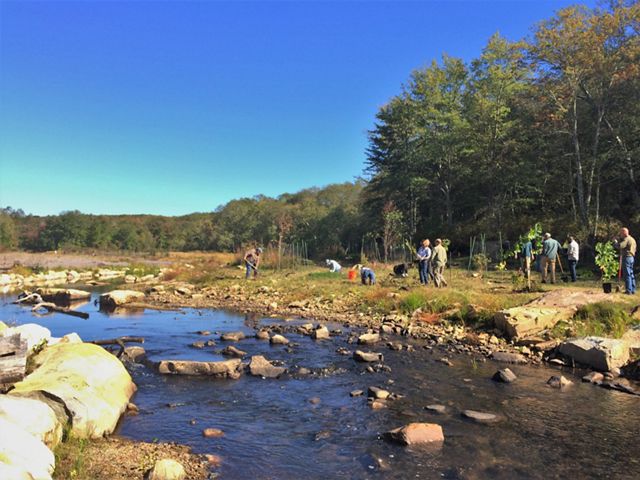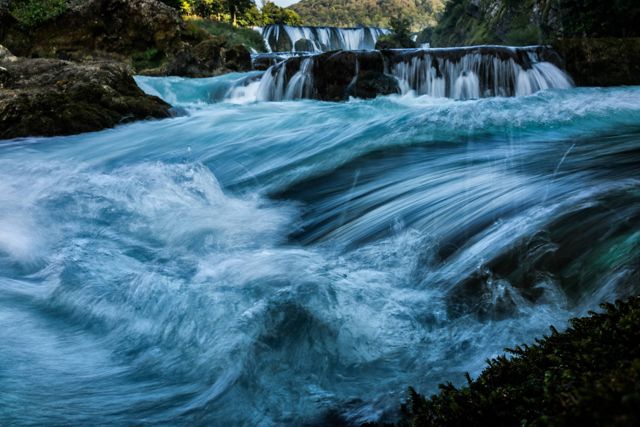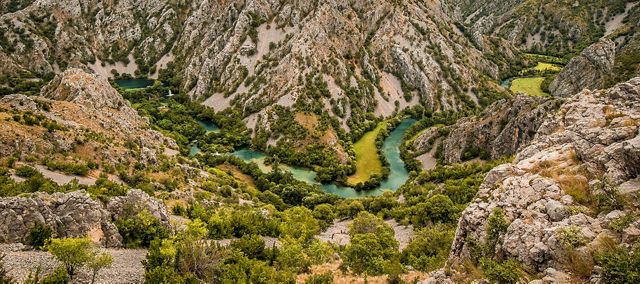In This Guide:
1. Introduction
2. Why Remove Dams
3. Project Phases
4. Financing Options
5. Case Studies
6. Resources
OVERVIEW
This is an introductory resource guide for those new to restoring rivers through dam removal.
In the coming year, the toolkit will be developed into a more comprehensive guide and training for practitioners. In the interim, we would be honored to have your input on the scope and content, to better support your needs. For the latest news and developments on barrier removal, please have a look at our European Case Studies, Financing Options and Resources pages.
1. Introduction
Rivers provide freshwater and fisheries to sustain us, support our farms, drive industry, and power our homes. We rely on rivers as transportation corridors connecting our seaports with inland towns. And we value our rivers for recreation such as fishing, boating, and swimming.
Such heavy use, however, has impacted the health of this important resource globally.
With more than 1 million dams, European rivers are among the most developed. This cumulative impact is one of the leading causes of the > 80% decline of freshwater biodiversity and a loss of 55% of the abundance of monitored migratory fish populations.
While many dams in Europe deliver invaluable services – like critical water supplies and flood risk reduction – it is estimated that tens of thousands no longer serve their intended purpose and create serious safety, economic and environmental concerns.
Further, advances in water use efficiency, nature-based solutions to water storage and flood-risk reduction, and more cost-effective ways of producing renewable energy, provide new solutions to better meet our needs.
Removing barriers to river health
This creates an unprecedented opportunity to re-think our infrastructure and restore European rivers, their biological diversity and the vital services they provide our communities. And we’re doing just that.
We’re working with partners to find renewable energy solutions that work for people and nature, to define enduring mechanisms that protect precious remaining free-flowing rivers and to strategically restore rivers to recover imperiled species, revitalize fisheries and to increase resilience for human and natural communities to a changing climate.
To date, The Nature Conservancy has worked with partners to remove more than 100 stream barriers in the U.S., restoring thousands of river kilometers which provide social and ecological benefits.
We’ve used this experience to invest deeply in the science of ‘where,’ to identify which future projects will provide the greatest ecological benefits, the science of ‘how,’ to understand which approaches work, and to pursue innovative policies and finance solutions that move beyond project-by-project decisions to address the scale of the problem for people and nature.
In Southeast Europe, we are sharing our expertise with local partners to support the development of their restoration strategies and, more broadly, we are partnering with Dam Removal Europe to support the growing movement to restore European rivers.
Move the slider on the image below to see the before and after of the Ennerdale Mill Weir removal.
Aim of this toolkit
We’ve summarized a collection of introductory resources for partners who are generally new to using dam removal as a tool for river restoration and are interested in learning how to approach a new project or engage in an existing project.
The toolkit synthesizes resources for communicating the benefits, understanding finance options and an overview of the process and issues that drive a dam removal project, and key issues to consider in design and construction.
It also includes issues that cut across phases such as developing a project team, hiring contractors, monitoring, and communication. It emphasizes how understanding your project goals and the key issues around your river restoration project will feed into your design and construction process and ultimately lead to a sustainable site restoration into the future.
In the coming year we aim to work with partners to develop this toolkit into a more comprehensive guide and training for practitioners. In the interim, we would be honored to have your input on helpful scope and content, to ensure the resource supports your needs. Please contact us here.
Terminology
Barriers on rivers, include dams, weirs, road and railroad crossings, levees and more, that fragment our rivers, impacting both up and downstream flow as well as the connection to the floodplain. For this toolkit we focus on dams and weirs. We will use the term “dam” inclusively to refer to barriers that span the stream channel for the purposes of impounding or diverting water, block the natural movement of water, fish, sediment and nutrients in the river. Dams can be made of any combination of concrete, stone, brick or earth, and may have been built for many different purposes such as hydropower, water supply, or recreation.
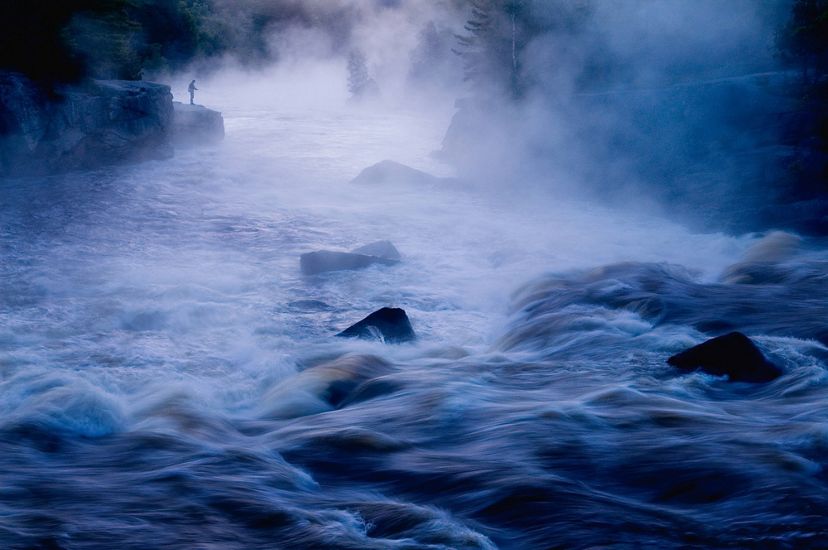
While the exact number is not yet known, it is estimated that there are more than 1 million stream barriers in Europe. Many still serve vital functions, like water supply, and flood risk reduction. However, it is estimated that tens of thousands are no longer in use, nearing the end of their design life, and in need of review to assess whether decommissioning and removal is an economically and environmentally effective path forward.
Over the past 25 years, led by countries including France, Spain, Sweden, Finland, Estonia and the United Kingdom, preliminary findings show that more than 4,500 dam, weir and barrier removals have been implemented in Europe.
Common reasons for pursuing barrier removal in Europe have included one or a combination of the following:
- Outlived service function (powering mills, navigation, irrigation, hydropower)
- Changing societal needs and values
- Costly repairs outweigh financial benefits
- Public safety concerns due to risk of failure during flood events
- Reduced capacity and function due to sedimentation
- Restore migratory fish pathways
- Restore ecological functions and ecosystem services
- Restore habitat for endangered fish and wildlife
Ecological and Socio-economic Benefits
Dams have a wide range of impacts on the environment and local communities, including loss of biodiversity, blocking fish migrations, trapping sediment and nutrients that maintain habitat and estuary health, and altering flow patterns that drive the productivity of downstream floodplains and wetlands.
The selective removal of dams can restore the natural flows and conditions of rivers, as well as the societal and economic benefits that rivers provide. Increasingly, dam owners and communities see dam removal as a long-term option and are enjoying the benefits of a free-flowing river.
Ecological benefits
While the specific ecological response to a dam removal project will be different for each river and watershed, there are general observations and conclusions that have been made from synthesizing the body of research published to date that provide a helpful foundation for predicting responses for future projects.
Recently, the Dam Removal Synthesis Working Group, a consortium of 22 scientists from U.S. government, academic and NGO organizations, summarized existing monitoring data and literature for more than 100 dam removal projects in North America. Similarly, EU AMBER Project and Dam Removal Europe recently synthesized the benefits of several European case studies.
This collection of studies has found:
- Rivers respond quickly. Physical responses to dam removals are typically fast, with the rate of sediment movement from the site largely dependent on sediment characteristics and dam removal strategy. Functional connectivity is also quickly restored, sometimes immediately, between upstream and downstream river reaches, including the movement of material and organisms.
- Watershed-scale benefits and climate resilience. Dam removal is one of the few reach-specific restoration practices that has demonstrated the potential for providing watershed-scale restoration and enhancing watershed resilience in the face of human-caused changes to the landscape and climate.
- Restoration of river processes and functions. Removals improved nutrient and sediment transport and substrate distribution. After a dam removal, stream functions may be fully restored in less than 10 years and frequently in less than five. Compared to other stream restoration techniques, dam removals restore self-sustaining processes, requiring minimal maintenance and delivering more sustainable environmental outcomes.
- Species and population recovery. Dam removal projects have consistently restored up and downstream passage for resident and migratory fish, including sea-run fish. Where sea-run fish populations have recovered, marine fisheries, have benefited. Monitoring reveals improvement to the quantity, age distribution and diversity of stream-dependent fish species, increased quantity and distribution of freshwater mussels and stream-dependent invertebrates and improved mammal and bird habitat.
- Water quality improvements. Improvements to water quality, especially ambient temperature, dissolved oxygen and nutrients.
- Predictions for short- and long-term impacts are improving. When a project is properly sited and carefully managed, the long-term ecological benefits have generally been greater than the short-term impacts. Environmental impacts from a project could include loss of wetland acreage upstream from impoundments, change in habitat type (from lake to stream), release of sediment from behind the impoundment and allowing non-native species to gain access to areas from which they were previously excluded by the barrier. These potential risks should be thoroughly assessed before implementing a project. Quantitative modeling capability is improving, particularly for physical and broad-scale ecological effects, giving managers predictive tools for more informed and precise decision making. Ecological responses differ upstream, downstream and within the inundation zone and there are empirical observations to help with predictions in each of these impact areas.
In summary, barrier removal projects, when properly sited and carefully managed, can be highly durable ecosystem restoration actions that permanently increase habitat connectivity and improve processes and functions important for the health of connected freshwater and estuary habitats.
Social and economic benefits
The benefits of a project will vary, in general they will be a factor of the position of the dam within the watershed, relative to other resources and threats, the condition of the dam, the complexity of the project and its management. Several examples of social and economic benefits are described below.
- Public safety and climate adaptation: Dams that have been abandoned or are unmaintained can pose a risk of failure, especially during flood events. Low head dams can also pose a significant hazard for boaters and swimmers. These risks can have resulted in property loss, injury and in some cases, loss of life. With a changing climate and an increase in extreme weather events, dam removal has been seen as a tool to reduce these public safety risks. An example includes the Massachusetts state climate adaptation programs.
- Avoided costs of long-term operations and maintenance. When compared to the long-term costs of operation, repair and maintenance, dam removal can often be the most economical option. A recent US study found that removal could be 10 to 30 times cheaper than ongoing maintenance and repair.
- Cultural values: Local communities and native people can have long-standing cultural and spiritual ties connected to individual free-flowing rivers, their features and the species that they support. Restoration through dam removal can provide significant, and in some cases irreplaceable, benefits in restoring these resources and connections to communities. Examples of dam removals that had a significant cultural benefit include, Glines Canyon Dam, Elwha River, Oregon; Veazie and Great Works Dams, Penobscot River Restoration Project, Maine.
- Transition to lower cost, lower impact renewable electricity:Older hydroelectric dams were often sited and constructed to support a specific mill or factory. Many of these mills and factories have since closed, and the capacity of the stranded energy to the electricity grid may be more effectively supplied by a lower cost, lower impact renewable energy source like wind or solar. Overall, with the significant drops in the cost of deploying wind, solar and battery technologies, a global study by TNC and WWF highlights the shifting role of hydroelectricity in meeting our clean energy needs, citing the global technical potential of low-impact wind and solar is 17 times the renewable energy targets under the Paris Climate Agreement.
Quote
To restore and protect the Elwha River for current and future generations, economists found that the public would be willing to pay $4.8B euros.
- Nonmarket benefits: Economists can apply statistical methods to estimate how much people value and may be willing to pay for, an environmental benefit. For example, in the consideration of whether to remove the Elwha and Glines Canyon Dams, researchers found the public would be willing to pay an estimated $4.8 B EUR to remove the dams and restore the river. Several similarly designed studies have documented the substantial value that people place on the following environmental changes associated with removing dams:
- The existence of a free-flowing river that individuals can see now, in the future, or for future generations
- Knowledge that endangered species are present in a river and their population is recovering
- Improved catch rates for recreational anglers
- Improved experiences for whitewater boaters
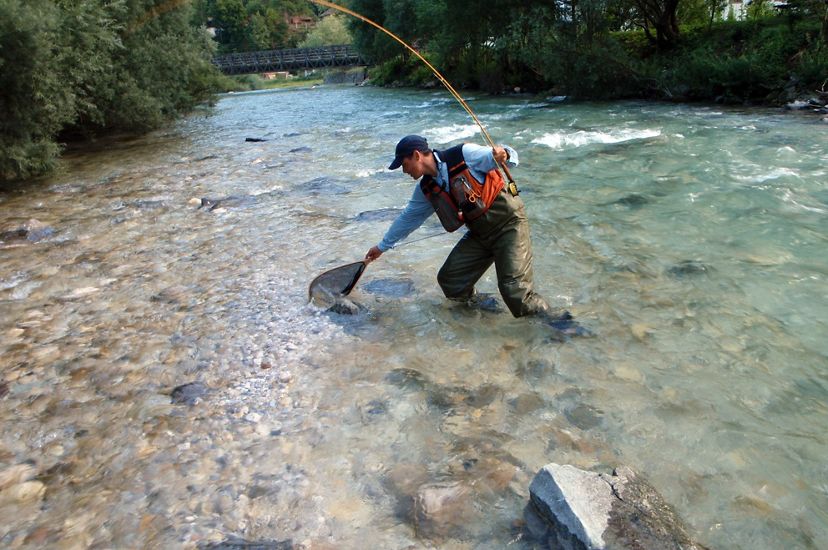
- Recreational angling and commercial fisheries: For projects that improve habitat for valued recreational or commercial fish, like trout, salmon, river herring, etc., measurable economic benefits have included improved catch rates, improved experiences, increase in jobs and revenue (increased visiting anglers). Two examples:
- The Sea Trout Funen Project in Denmark generates an estimated $5.8 M EUR/year in angling tourism for a $.5M EUR/year initial investment in river restoration through dam removal.
- In the State of Maine, USA, the restoration of rivers has resulted in fish harvesting permit sales to towns exceeding $600,000 EUR/year (Maine DMR). The permit sales in the Town of Benton equals 15% of their town’s annual budget. The harvest supplies the spring lobster industry with 50% of their bait needs, avoiding importation costs, the use of less effective bait, and boosting Maine’s most important ($450M EUR) marine fishery. The second most important fishery is another searun fish, the juvenile (elver) American eel (>$18M EUR in 2019: Maine DMR).
- River recreation and other tourism: Returning rivers to a free-flowing state can support new canoeing, boating and whitewater rafting opportunities. An increase in boaters can benefit neighboring communities when visitors support guide companies, restaurants, lodging and other establishments. For example, after the restoration of the lower Penobscot River the city of Bangor hosted the North America Whitewater Regatta for the first time and remained the host for three years in a row, bringing significant tourism and related revenues to the region.
- Restoration economy – job creation: Dam removal projects are infrastructure projects, and as such require the labor and services of engineering and construction professionals. This value has rarely been quantified but two examples from the United States demonstrate the tangible economic benefit and justification for further concentrated research.
- In the state of Massachusetts, for every $900K EUR spent on restoration projects, 10 to 13 jobs were created or maintained
- In the state of Oregon, 15 to 23 new jobs were created for every for every $900K EUR spent on watershed restoration, this also resulted in and $1.9-2.0M EUR in economic activity
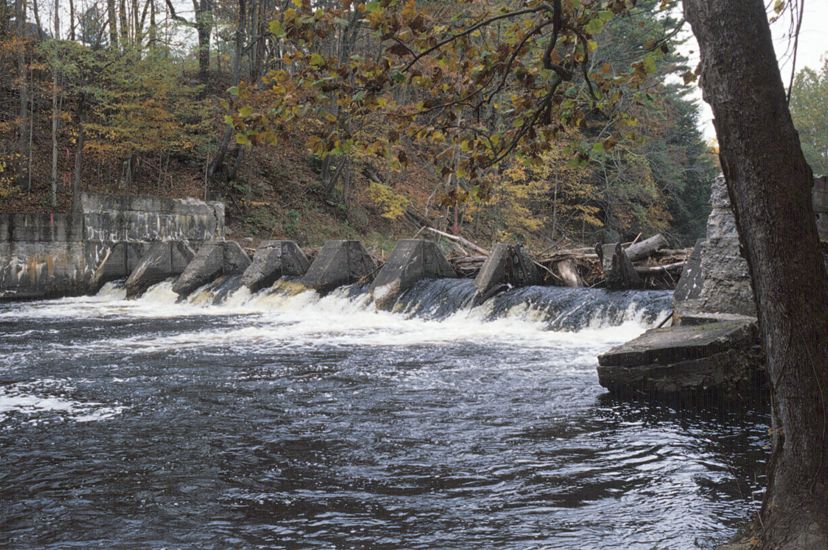
With so many dams and possible projects on rivers, how to start can feel like a challenge. There are a series of tasks that must be accomplished to take a project from an idea through design and ultimately construction for restoration. While each project is unique, generally, most projects require similar phases and considerations as outlined below and then further described in the following sections.
Project Planning and Assessment
Defining project goals, prioritization considerations
Determine goals for all project partners at the beginning of a project. Fish passage, healthy water quality, improved safety, and reduced maintenance may all be part of the suite of issues that partners bring to a project. Understanding everyone’s objectives upfront will save time and ensure a better design and outcome.
Dams of all sizes and types have similar impacts to rivers, as discussed earlier. Any given project will improve river habitat to different degrees depending on the scale of the impact. Where we work and how we spend limit resource dollars increasingly calls for us to be strategic when choosing which projects to move forward.
Many governments and nonprofits now have decision-support or prioritization tools available to estimate the relative benefits of a potential project. Common prioritization metrics for ecological restoration include projects that connect a high number of river miles in areas with good habitat and projects that will that will improve water quality.
Often these decision-support or prioritization tools are developed at a watershed or basin scale. By working at a watershed scale, agencies and partners can identify multiple projects that may advance established goals to restore rare or important riverine species.
In these cases, possibly several removals together will create a large network and could have a greater impact that one project alone or projects across multiple watersheds.
Please see the Resources section for example approaches to barrier prioritization and watershed scale restoration.
Developing a team. Who does what work?
Developing a strong project team can be very helpful for some projects, particularly when managing more complex issues and multiple objectives. Even so it is good to determine who is the central project manager and how partners are each contributing.
If agency personnel are able, it can be beneficial to have them on the partner team to help access with data collection or assist with early review of designs and the permitting process. This does not need to be a formal or written structure, but questions to consider include:
- What is the role of agencies and NGO partners?
- Do partners want to meet regularly or do some prefer to be simply included when there are particular types of questions?
- Who will hire engineers or construction contractors?
- Who will be responsible for fundraising?
Different project phases will require different expertise, including biologists for survey, environmental and structural engineering firms for design, historic specialists, and permit specialists. The project team members may be able to complete some of these tasks.
For instance, state biologists may already have species information or are able to do the necessary biological inventory. Similarly, someone on the team may have experience with completing and submitting permits.
Project considerations
Ownership
Permission to remove a dam is a critical early step. Dams may be owned by the government, businesses, nonprofit organizations or individuals. Determine who owns the dam and what their long-term interests are in the dam and the associated uses of the impoundment.
Dam owners often have concerns and need design answers before they are able to decide. In such a case it is not uncommon to do a certain level of research or limited analysis to help answer some of these questions or agree that the design will meet a certain set of criteria.
For instance, that a drinking water intake that relies on the depth of the impoundment will be replaced with an alternative. When actively developing designs for a project, it is important to have agreement with the dam owner for removal and restoration before investing a lot time and resources.
Site assessment
We can often get a good sense of the complexity of a project and the types of issues that may need to be addressed through a simple site visit and some basic work looking at the site and watershed online through aerial photos and satellite maps.
Issues to look for include size of the dam, width of the impoundment relative to the river, existing uses (hydropower, water supply, recreation, etc.), adjacent infrastructure (roads, bridges, walls), upstream land use, sediment, visible bedrock, and more.
A sample site assessment to understand the potential complexity of a project is also included under the Resources section.
Existing Use
Every dam removal will change the area upstream and to varying extents the area downstream of the dam. Determining the existing uses of the dam and the impoundment are important to understand what uses may be affected and how that will impact the design.
In many cases, the existing uses will not all go away or can be mitigated for in the design. For instance, a pond that is used for fire suppression could be replaced by an in-river hydrant. In a well-known case in the United States, active hydroelectric dams were removed on the mainstem Penobscot River in exchange for the ability to install increased power capacity at dams on a tributary.
Local connections to the dam or impoundment go beyond commercial uses. Members of the community may feel a strong emotional connection tied to existing uses for recreation, scenery, or history. This fear of change can be a difficult hurdle to overcome and we discuss it further below when assessing key issues in your design and the importance of pro-active and consistent communication throughout the project phases.
Key issues to consider in assessing project scope and feasibility and defining project stakeholders
The following is an overview of many of the key issues that may need to be addressed as part of the design and permitting. Not all projects will have all of these issues, but we cover them here so that you may anticipate them. Keep in mind that rivers are dynamic systems and often the less work we do in the river often yields better results.
The top issues that are most likely to drive the complexity of a project are existing infrastructure, sediment quantity and quality, and ecological sensitivity, so we touch on those first. Case studies that illustrate complex and straightforward projects are included in the Case Studies section.
Infrastructure/Utilities
It is critical to the design and construction of any dam removal to avoid impacts to human health and safety. Identify any infrastructure adjacent to, or within the limits of impact of your project early in the project.
This includes bridges upstream and downstream of the dam, roads or walls along the river, and water or sewer pipes under the stream bed or in the adjacent river bank. Not all infrastructure will be affected by the removal, but you want to determine this in advance and plan for it.
Often bridges or pipes were installed without considering that the dam and impoundment may not always be in place. Rivers are dynamic and can shift course from floods. In some cases, relocating a water pipe will be the best long-term solution. Adding scour protection to an existing bridge may be enough to protect from changes that might otherwise undermine a bridge pier or abutment.
Sediment Quantity and Quality
Sediment type, quality, and quantity play a large role in project design. In recent years, resource agencies and the dam removal community have come to better recognize that rivers naturally move sediment and nutrients every day, and even more so during high flow events. Sediment is a natural component of the system.
But obviously we want to consider the types of impacts from a dam removal that may result in a large amount of sediment moving downstream in a short amount of time and design the project appropriately to avoid and minimize risks.
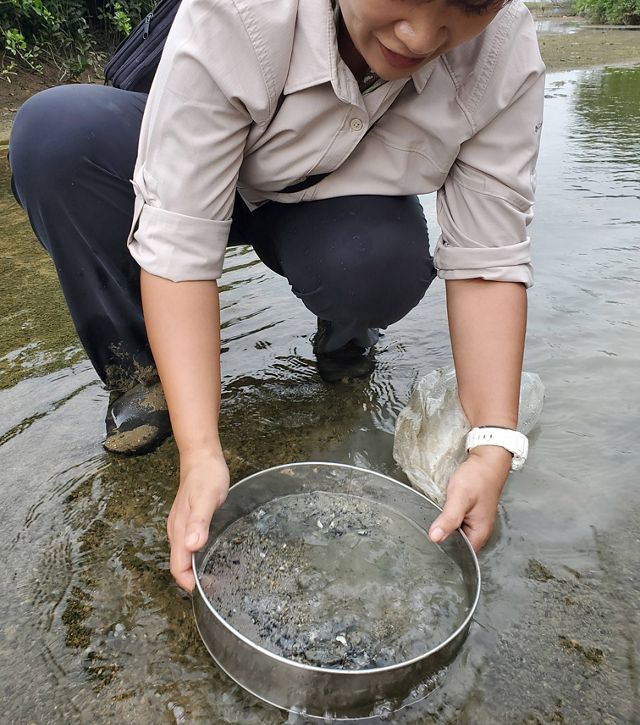
Determine early in the design how much sediment is present, what type (fine vs. coarse), how much is likely to be transported downstream, and what types of downstream impacts and benefits could result from sediment release.
Sediment that is contaminated with high levels of pollutants that can impact human health may need to be removed and relocated to an approved off-site location.
It is important to note that not all dams accumulate sediment, not all sediment in the impoundment will move, and even then, not all at once. As a general rule a wide impoundment with a small stream will have less sediment erosion than a narrow impoundment.
Sediment, particularly sand and gravel, can be beneficial for rebuilding downstream gravel beds and creating habitat, as well as rebuilding estuary habitats and salt marshes farther downstream. Therefore, some projects allow for a natural release of sediment that will gradually move downstream and ultimately be replenished from upstream through restored river function after the dam is removed.
The Ennerdale Weir and the Retuerta Dam removals illustrate two different approaches to managing sediment benefits and impacts. See also the Additional Resources section for links to an example of published sediment guidelines from the US Bureau of Reclamation.
Ecological Sensitivity
Dam removal will fundamentally change the habitat type and construction activities inherently have some impacts. The fish, wildlife, and plants that are in the impoundment will be impacted as the dam is removed and the water recedes.
It is important to recognize this and know that there will likely be a loss of plants and animals with low mobility (like mussels). You cannot avoid all impacts to all individuals or species, but there are best practices that can be implemented to minimize these impacts.
Work with your natural resource agencies to determine particular species that are threatened or endangered which could be impacted in the short or long term. In other words, those species that will be impacted by the change in habitat type from an impoundment to a river, or by the construction activities itself.
Once you have identified if those species are present, you can develop a plan to avoid and minimize those impacts.
Planning for species impacts could include adjusting the time of year construction takes place, implementing certain measures during construction to avoid impacting the species, or adding habitat features to the design to benefit critical species. Some examples are below.
Construction timing: Avoiding impacts
- Biologists may want to avoid construction during the migratory season for fish. Thus, the construction can be timed to start after migration.
- Avoid nesting and spawning season for a particular species, or have a biologist identify specific sites to be avoided or protected during construction.
Pre-construction methods: Minimizing impacts
- Biologists may be able to collect and relocate individuals from the impoundment before construction starts. For example: electro-shocking fish or hand collection of mussels during a controlled draw down of the water level.
- Installing barriers to prevent species from moving into the construction site. For example, a barrier can be put in place around the site to prevent wildlife, like turtles, from entering the construction zone and being injured by moving equipment.
Improving Habitat: Mitigation for impacts
- Native plants can be added to kick start a restoration, such as trees to add shade to reduce water temperature
- Habitat features could be added for sensitive species that may be impacted. An example of this could include keeping trees removed during construction on site and piling them in appropriate areas to create shelter or nesting sites.
In the Ennerdale Weir removal case study, protected fresh-water mussels were both a target species that benefit from the removal, as well as a sensitive species requiring special sediment management measures during construction.
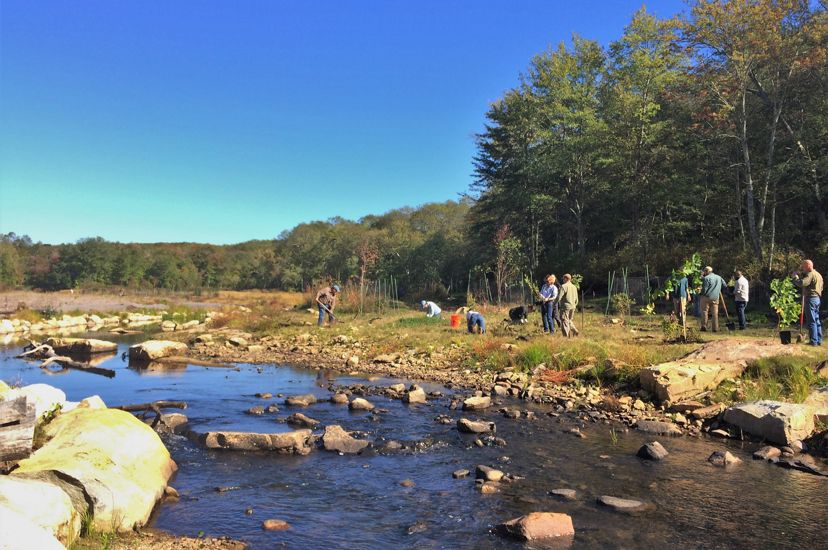
Aesthetics
Dam removal can result in a big visual change, especially for larger impoundments. This can be a challenge for the public to accept. If your project is in a highly visible area, consider additional public outreach to prepare people for the change and provide examples from other projects.
Public outreach can be supported by developing design schematics, photo simulations, or illustrations of the site before and after removal. Examples from other dam removal and restoration sites are also useful. These types of public sites may also warrant consideration for additional planting to kick start some of the natural regrowth.
The impact on steeper gradient streams with narrower impoundments will likely be less visually dramatic and therefore less challenging for the public.
Recreation and community access
As the river changes, types of recreation can change. Talk with the community about what concerns they have. Sometimes a drained impoundment can have walking paths built or benches and interpretive signs added at overlooks. Fishing access or new boating access can also help people enjoy the new river. In some cases, dam removal creates new white-water recreation opportunities.
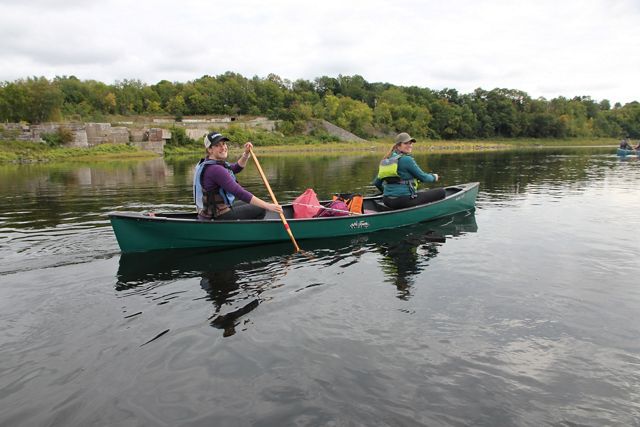
Historic
Many dams were built decades to hundreds of years ago and may have significant cultural and historic significance. Removing a dam could have an impact on these values. Identify the local and country laws around these impacts. In many cases the impact cannot be avoided, if the dam itself is the critical feature. Photo documentation of the dam before and during removal can provide insight into the architectural and engineering history of the dam. Interpretive signs can serve as a marker and educate the public of the past significance of the site after the project is complete.
Flooding and Flood Control
People often have concerns about how dam removal will affect flooding. This stems in part from the perception that all dams provide flood control, when in fact very few actually do. For a dam to provide flood control is must have available storage capacity, and typically flood control dams are built specifically for that purpose. On the flipside, removing a failing dam will actually eliminate what could be a much higher safety risk during a flood. A best practice is to listen to local concerns and consider how to address those questions as part of your communication with the dam owner and the public.
Design and Permitting
Once you have selected a project and understand the key issues, you will need to develop design plans to complete the restoration. The complexity of the project will determine what types of engineering and biological studies are necessary and how detailed the plans need to be.
Sustainable Restoration Project Design
Design should address the previously discussed issues through the project planning and site assessment, as well as those identified by the owner, partners and agencies. Keep in mind that not all projects need to design for, or consider, all issues.
Restoration projects should be designed to meet ecological goals and match the situational context, while maintaining health and safety of the community. Consider the following three keys when approaching your project design.
- Simple vs. Complex projects. Projects will need a different level of design and analysis depending on the issues at the site and the surrounding context. For instance, a project in the middle of a city with adjacent water pipes and a high volume of potentially contaminated sediment will require greater study and likely a more complex design than a project on a bedrock dominated stream in a natural area.
- Removal for restoration. In order to restore river function and processes any dam removal should always remove the full vertical extentof the dam and as much of the horizontal span as possible, but at least to the width of the channel and stream banks. If any of the dam is left in the stream bed the river will erode downstream of the remaining structure and create a scour pool with a newdam at a lower level. Similarly, a river constricted by the width of the removal will create higher velocities and the scour the riverbed as well as limit fish passage.
- Passive vs. Active Restoration. Given the dynamic nature of rivers, less is often more when it comes to river restoration. Understand the project goals and determine how best to meet those through the design process. Passive restoration recognizes that the site will adjust over time and minimizes in-channel work, focusing on full removalof the dam and allowing for the river to self-adjust. Active restoration may be more appropriate in a case where infrastructure and sediment management require some direct channel reconstruction, or installation of infrastructure protection measures.
Hiring the right expertise
Many projects will require design by a certified engineer. Often this will include someone or a firm with experience that includes hydrologists and structural engineers. You’ll want to find someone with experience working in river systems.
Dam removal is a relatively new field, so not all engineers may have designed a removal, but identify engineers with experience in rivers, including dam building or bridge design. Both types of projects that require similar types of analysis involved with dam removal.
Also consider including a fluvial geomorphologist on your team, a scientist who understands how flow and velocities influences river structure and habitat. Especially if others on your team don’t have prior experience working on river restoration projects, it is important to have someone with expertise in river form and function reviewing the design.
Basic components of a project design
Three basic components of a project design include a technical memorandum, engineering design sheets, and the cost estimate.
Technical Memorandum: A technical memorandum describes the rationale behind the design and summarizes the analysis that went into the design. The memo can also be used to layout alternatives analysis if that was part of the process.
Design sheets: The detail of your engineering design will depend on the complexity of your project and your permitting requirements. In general project plans will lay out a site base map with existing conditions and natural resource areas, equipment access, the sequence of removal construction, extent of natural resources impacted, and proposed final conditions. Design plans typically present a profile view of the stream channel as well as existing and proposed cross-sections of the river channel. You may also need to provide detailed information on particular activities such as how you will manage dewatering, sediment management, or restoration plantings.
Cost Estimate: Once you have a design, you’ll be able to determine estimate. Working with an engineer they are able to estimate costs before you look for a construction firm to complete the work.
Permits
Contact your regulatory agencies to determine what permits the project will require, including the timelines and agency personnel contacts for each permit. Typical permits can be from separate local and state authorities and may relate to potential impacts to wetlands or stream, species specific impacts, dam specific issues, or building and demolition issues.
Rather than wait until the design is complete, it is often useful to initiate project discussions with the permitting agencies early in the design process so that designs may be adjusted to best avoid impacts and account for resource concerns. This iterative process can save time and money and often delivers a better restoration result.
Construction
As with each of the topics discussed so far, the complexity of your project will drive the construction approach and length of construction.
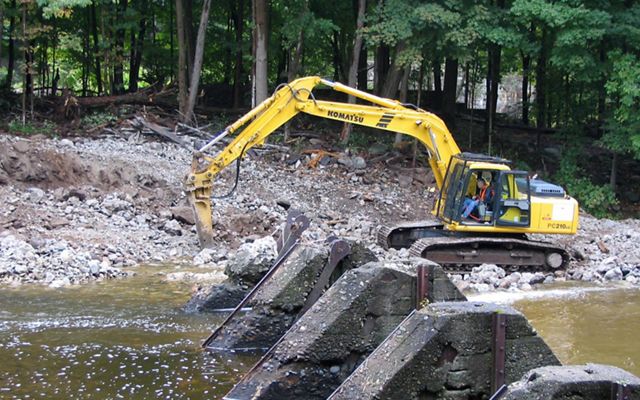
Construction approaches
How you approach construction will be somewhat determined by design issues such as your sediment management plan and avoiding sensitive species impacts, and site issues, such as if you are able to draw down the water levels in the impoundment in advance.
In general, one big question to answer is how much of the work can be done with equipment in the water vs. “in-the-dry.”
Keeping a site dry often requires extensive water control measures and piping the flowing river around the construction site. Building and maintaining water diversion will extend the construction time and increase costs, but there are often reasons that this is right approach, for instance when building in the river.
In the case of in-river work, it is allowable for the equipment be in the river up to a certain safe depth, usually with a requirement for biodegradable hydraulic fluid. This works better in cobble and bedrock streams where there is less risk of heavy equipment sinking into soft sediment.
Working with a contractor
Determine how to move forward with construction and bring in the right expertise to fit the project. More complex projects may require hiring a construction firm with significant structural building experience.
Regardless of the complexity of the project, look for firms with experience working in water, particularly in rivers. These types of firms will know how to watch and manage for rain events and will have operators comfortable working in wet environments. Many of these firms are also often able to suggest construction approaches that save time and money.
Determine who from your team, partners or the engineering design firm will be on site to help direct the contractor. You should consider having the design engineer on site for phases that include technical issues such as complex water management or building infrastructure protection measures or a rock riffle. Having the design engineer on site also ensures they are liable for their designs if they oversee installation.
.jpg?crop=0%2C80%2C4000%2C2500&wid=640&hei=400&scl=6.25)
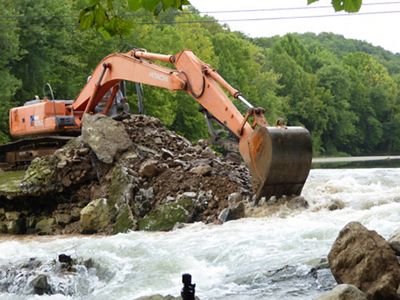
Safety
Always develop and follow a safety plan both for the safety of the contractors and for the partners and visitors to the site. Common elements include restricting public access with posted signs, wearing safety vests and hard hats, requiring visitors to check in when arriving on site, and posting proper signs to direct traffic.
Cross-cutting
Some issues will be ongoing across all project phases and it will depend on the project the extent to which you need to plan for each of the following issues.
Monitoring
We learn from our successes and our challenges with each project and the right monitoring contributes to our understanding of river restoration techniques. Partners should determine what metrics should be monitored as not all projects necessarily warrant the same level of monitoring.
Often funders require monitoring of one or two factors to ensure the project met the funding goal. For instance, evidence that migratory fish are using the site and continuing upstream following restoration, or improvements in water quality and temperature.
In other cases, partners have reason to complete a longer and more comprehensive study to include physical and biological metrics such as plant communities, fish and wildlife presence, substrate type, water quality, and more. For most projects, you’ll want to determine an appropriate time span, including sufficient pre and post restoration data collection.
Examples of monitoring protocols are included in the Resources section below.
Funding
Funding is always a big question with any project. Based on your project goals and the types of benefits you may be eligible for different types of funding.
Determine what species will benefit from your restoration, including metrics like how many miles of habitat will be accessible. Projects that benefit migratory species are often easier to fund, but funding is available for native species as well.
Also look into infrastructure funding, considering that removing aging infrastructure has a public safety benefit and reduces future maintenance costs. When developing a budget for your project, be sure to include these key elements. See our section of Financing Options for more information.
Communication and Stakeholder Engagement
Clear, proactive, and consistent communication with the stakeholders interested in the current and future condition of the river may be necessary across all phases of a project from planning through construction and post-construction monitoring.
Depending on the complexity of the project, this may include a combination of announcements in local newspapers, community forums or social media, public meetings and an accountable and accessible point of contact for stakeholders to reach with any questions or concerns.
Some smaller projects with fewer noticeable changes may not require the same intensity of outreach. Communicate the anticipated benefits of the project, any anticipated negative impacts, and a plan to manage those impacts. Often, an illustration of the site before and after construction, can help with communication.
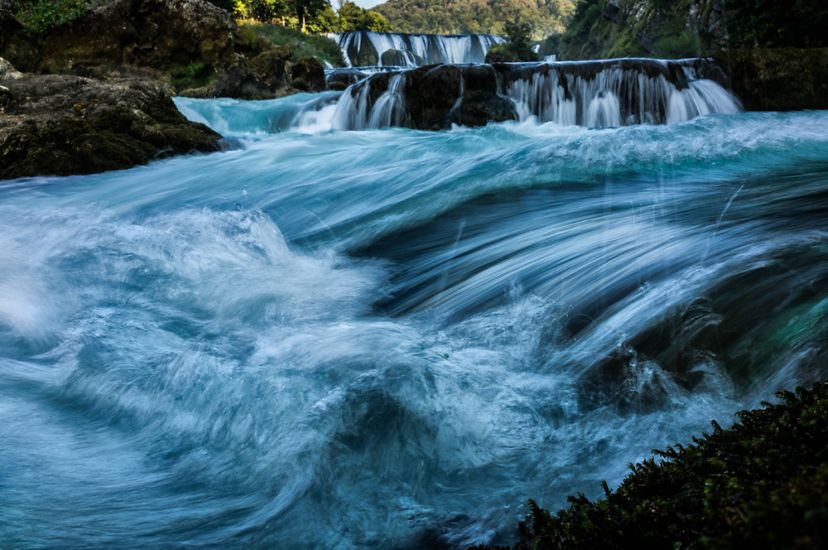
Ideally, when a dam is no longer serving its intended purpose, or when its value is outweighed by the social or environmental costs, the owner would be responsible for, and able to, finance removal of their infrastructure.
Today, for many reasons, this is rarely the case. Over decades, and in some cases centuries, dams can change owners multiple times, or they can be abandoned altogether. In addition, historically, the life-cycle costs of a dam, including the cost of removing infrastructure, has not been factored into the business model.
Many local and national governments, including many countries in Europe and in the U.S., lack proper regulatory frameworks and funding mechanisms to address the public safety issues associated with maintenance and removal of unsafe dams.
So, who pays for a dam removal? In this section, we’ll first outline mechanisms that have been readily used to fund projects in Europe, followed by emerging innovations for dam removal finance in Europe and abroad.
Existing Funding Mechanisms
By understanding the many potential benefits the project may provide – for people and nature – in addition to your specific objectives, you can maximize the potential for community and financial support.
These benefits may include climate adaptation and public safety, water quality, recreation, water supply, biodiversity, migratory fish and the environment. In general, sources can be separated into public and private funding.
One source of funding may be adequate to finance a small, low-controversy project – while large, and more complex projects may require two or more sources of funding.
Public funding sources used in European countries include:
European Union
- The Cohesion Fund: This fund allocates € 63.4 billion to trans-European transportation and environmental projects, aiming to reduce economic and social disparity and promote sustainable development. In candidate countries it has been used to support dozens of dam removal projects. Notably, the Estonian Government successfully leveraged use of the Cohesion Fund to finance 85% of a €15 M basin-scale restoration project in the Parnü River Basin including eight dam removals on the mainstem and tributaries. The remaining 15% was provided by the Estonian state budget. Key to using this fund was the development of a River Basin Management Plan that identifies the needs and priorities for dam removal consistent with implementation of the Water Framework Directive.
- European Maritime and Fisheries Fund: This fund supports projects that improve European fisheries and has been used extensively to support dam removal and fish passage projects. Example: Ennerdale Mill Weir
- European Commission LIFE environment subprogram: The goal of the environment subprogram is to fund nature conservation projects with a focus on the areas of biodiversity, habitats and species, so long as more than half of the project costs are used to improve conservation status of priority habitats or species listed in the EU’s birds and habitats directives. Otherwise, general nature conservation projects may receive co-financing of up to 60%. Example: Yecla de Yeltes Dam, Huebra River, Spain incudes a Natura 2000 site and was therefore eligible for LIFE funding.
Local and National Governments
- Municipalities and Water Authorities may have the resources and jurisdiction to purchase and remove obsolete dams. Example: In Sweden, Hudiksvall Municipality, purchased and removed Sofieholm’s hydroelectric power station. In France, water authorities may subsidize a portion of removal costs.
- Project funding has been provided through national agencies including national park authorities, environmental agencies, and marine and fisheries management agencies in countries including France, U.K., Estonia, Sweden, Switzerland, Spain, Finland and Germany have funded projects. For example, in 2019, the Finnish Government announced they would allocate $18M EUR to increase funding for restoring migratory fish through barrier removal and restoration of breeding grounds.
Private funding opportunities may include:
Foundations and private donors
- Removing an obstacle from a river and returning it to its free-flowing state is something that can be seen as a direct legacy for donors. The one-time investment has a tangible and long-lasting benefit to the environment.
Crowd-sourced funding
- Europe is a global leader on funding barrier removal through crowdsourcing. Led by the efforts of WWF Netherlands, they have facilitated raising tens of thousands of EURs to date, removing barriers in the Ukraine and the U.K., with more in the cue. Learn more about their Dam Removal Funding Platform here.
Non-governmental organizations
- Local, national and global environmental and river conservation organizations
- Angler’s associations (Association of Anglers for the Conservation of Rivers, European Anglers Alliance). On the River Dove in England, local fishing clubs helped to fund and manage dozens of weir removal projects.
- Whitewater and paddling associations
Four Emerging Innovations for Finance
In the absence of dam owner liability and retirement laws, many creative approaches to finance dam removal projects are emerging. We introduce four general mechanisms here which are currently being explored by The Nature Conservancy and Dam Removal Europe partners that include a combination of approaches for reducing costs and increasing funding streams.
1. Life-cycle finance models
With a better understanding of the full life cycle cost of dams, lenders and governments can make project financing and permitting contingent on a commitment to incorporate the true cost of the project, from cradle to grave, into the business model.
This would include the project owner guaranteeing financial reserves for the removal. In a setting where the cumulative social and environmental impacts of existing dams is already high, these reserves may be used to establish a revolving fund where the cost of removal of the newly financed or permitted project is used in the near-term to remove existing high priority dams that no longer serve their intended purpose.
2. Climate adaptation and public safety
As our climate changes, flood and drought events will continue to become more extreme. Strategic barrier removal can be incorporated into local and national climate adaptation strategies to reduce the community risks of failure during a flood event or exacerbating critical water quality conditions during dry seasons or drought events.
This is also a measure to support adaptation of ecosystems by increasing river connectivity and resilience. In Massachusetts, there are several state-level programs that can serve as models for how to include dam removal finance in a public safety and climate resilience strategy.
Three examples include:
- Dam and Seawall Repair or Removal Fund. A grant and loan program for projects that deliver community safety benefits and prioritizing projects with environmental co-benefits. This fund applies to dams and seawalls, but the model could also be expanded to other stream barriers like undersized road culverts or levees.
- Municipal Vulnerability Preparedness (MVP) Program Action Grants. TNC worked with the state to develop a vulnerability and climate adaptation rapid planning process for municipalities. After completing a MVP plan, municipalities are eligible to apply for Action Grants to implement their plans. Ecological restoration, including dam removal, is an eligible activity.
- State Hazard Mitigation and Climate Adaptation Plan (SHMCAP). Using a collaborative stakeholder process, Massachusetts recently released a statewide climate adaptation plan to promote resilience of state agency operations, assets and resources. Dam removal is a key adaptation tool referenced in the newly released plan and draft legislation is being proposed to fund implementation.
3. Environmental markets for dam removal
An environmental market is an exchange-based approach that uses market mechanisms to achieve environmental goals (regulatory and non-regulatory). Below, we outline two types of environmental markets emerging for dam removal; compensatory mitigation and ecosystem service markets.
Compensatory mitigation. The first is based on the opportunity to use dam removal as a mitigation tool for unavoidable environmental impacts as required by regional or national environmental regulations. For example, in 2018 the Sihlpost Dam was removed in Sweden as mitigation to offset river impacts from a railway expansion.
A recent Nature Conservancy study highlights example crediting mechanisms for dam removal and offers recommendations to increase the use of dam removal as a mitigation tool in the U.S.
The study identifies several regulatory frameworks related to water quality, habitat, endangered species, fish passage and hydropower that have market potential for barrier removal. Building from that study, U.S. Army Corps of Engineers issued regulatory guidance to support dam removal as a compensatory mitigation tool under the U.S. Clean Water Act.
In Europe, environmental regulations and mitigation requirements vary from country to country, however three general regulatory frameworks may readily support markets for barrier removal:
- Biodiversity offsets—where new development is negatively impacting river habitat, and offsets are required, dam removal can be a durable river restoration tool to create habitat for critical species and populations – in particular, for migratory and resident fish, freshwater mussels and other macroinvertebrates and, potentially for riverine-dependent plants, birds and mammals. Regulatory frameworks that may support biodiversity markets include Natura 2000, European Commission Eel Regulation and National Eel Management Plans, and country-or regional fish passage regulations.
- Concessions/permits for water use or hydropower—where regulatory requirements are in place and enforced, strategic dam removal can be a mitigation tool for renewing existing hydropower and/or water use concessions or potentially for considering new ones.
- Water Framework Directive—several dam removal projects have demonstrated the ability to improve ecological status to meet the goals of the water framework directive. Similar to biodiversity offsets, where existing or new developments are seeking opportunities to mitigate their impacts to a stream’s condition and status under the Water Framework Directive, dam removal may be used as a mitigation tool (see benefits).
Quote
In the U.S., formalized environmental mitigation markets have been demonstrated to reduce permitting times by half, can make more effective conservation investments and allocate an estimated $900M EUR per year.
Targeted ecosystem service restoration.
A second type of market may be created by the restoration of a specific ecosystem service. Simply put, a service provider pays for the dam removal to improve the provision of its services.
For example, dam removals have been demonstrated to improve water chemistry (DO, temperature) and reduce the risk of algal blooms. A water utility may pay for the removal of an obsolete dam upstream of its intake, in order to improve source water quality and reduce treatment costs.
Dam removals have also been demonstrated to drastically improved recreation and fishing opportunities. In these cases, an angler’s association group may pay to remove a dam in exchange for the benefit of the fisheries or in exchange for an extension of the region for which it manages permitting authority.
4. Leveraging economies of scale
Governments, NGOs and private investors have found ways to drastically reduce the project costs of dam removal by both, vertically integrating project phases and by implementing multiple projects at the same time.
For example, there is a federal team in the U.S. Fish and Wildlife Service that is trained in the design, permitting, project management and construction of dam removal projects. This team specialization has dramatically reduced the overall cost of project implementation and could potentially be replicated by a government agency or NGO in Europe.
Similarly, government agencies and NGOs that are moving forward with several dam removals at the same time may issue a request for proposal on a comprehensive service contract, attracting more competitive bids from engineering firms, again, reducing the per-project costs.
-
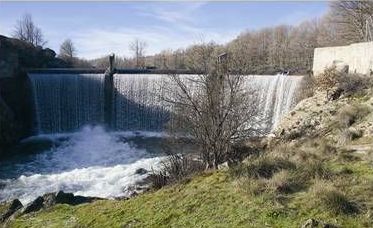
Retuerta Dam, Spain
Removal of the Retuerta Dam is restoring fisheries and natural river processes in the Aravelle River in the municipality of Umbrías, Spain. Read the case study.
-

Ennerdale Mill Weir
The Ennerdale Mill Weir removal is an example of a successful project that was accomplished with limited complexities. Read the case study.
-
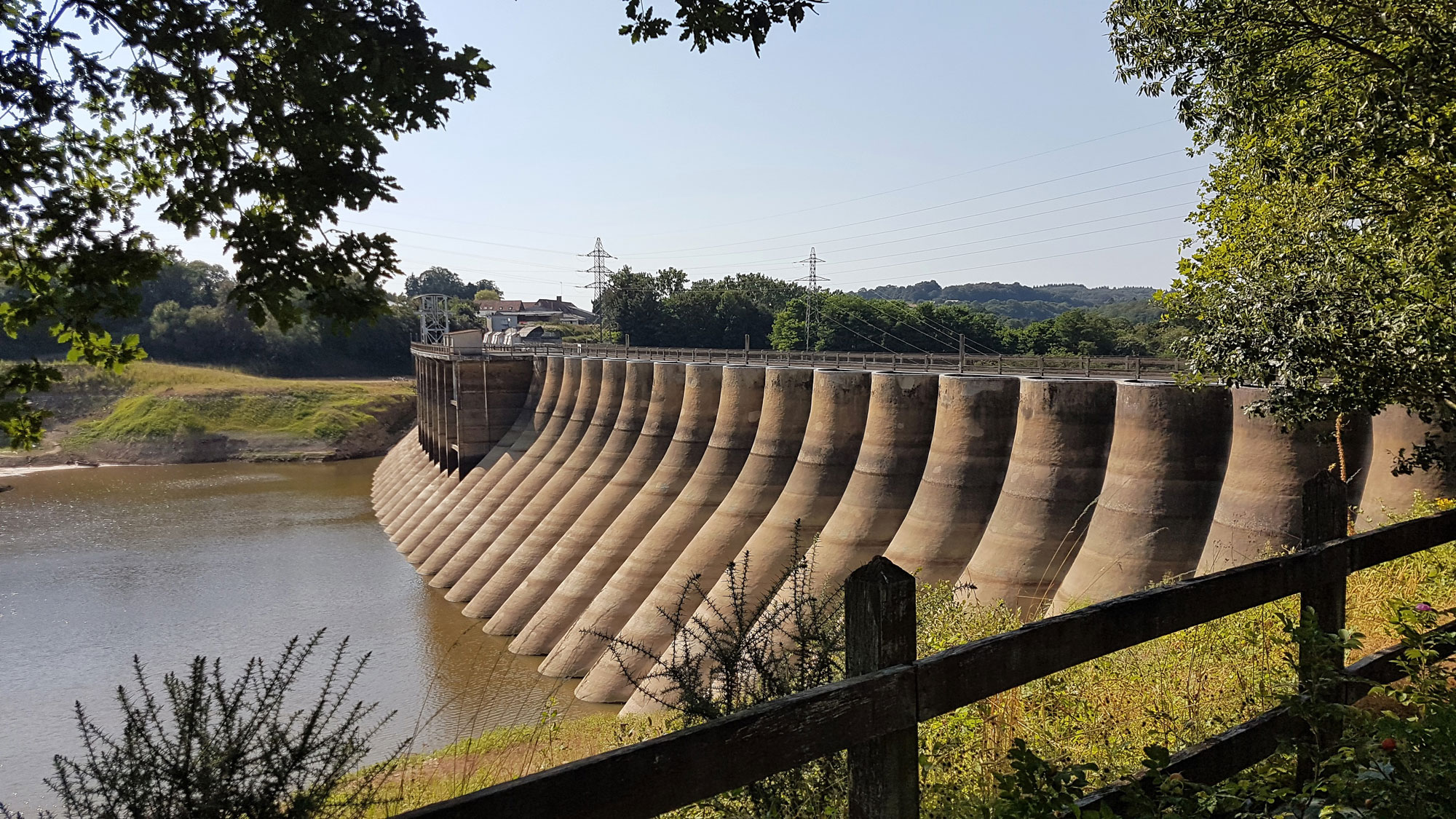
Vezins Dam Removal
The Roche-Qui-Boit and Vezins Dams on the Sélune River in Normandy, France, have a long history of studies and management plans leading ultimately to the decision to remove these two large dams. Read the case study.
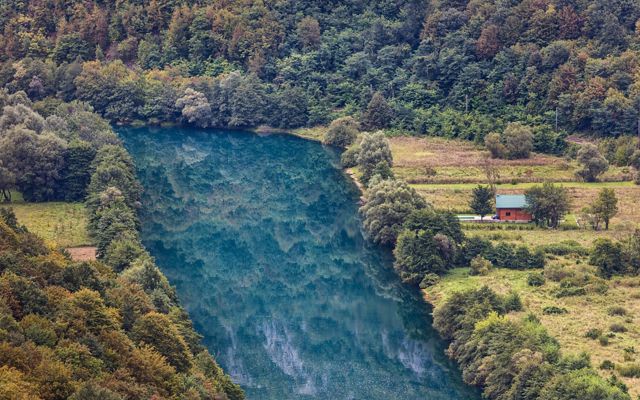
-
- Dam site reconnaissance: this document lists types issues to look for when visiting a dam site or completing research on the project. The information will help you get a feel for the feasibility and types of issues at the project. We recommend printing a copy and then answering any relevant questions in a separate notebook, or whatever format you prefer. View here.
- American Rivers Restoration Tools and Resources. A digital guide containing resources designed to empower river restoration practitioners with the tools, skills, and understanding necessary to restore damaged rivers. https://www.americanrivers.org/conservation-resources/river-restoration/
- American Rivers. Removing Small Dams: a Basic Guide for Project Managers https://www.americanrivers.org/2015/06/want-to-remove-a-dam-not-sure-where-to-start-check-this-guide-out/
- Dam Removal in Massachusetts: A Basic Guide for Project Proponents
https://www.mass.gov/files/documents/2016/08/xb/eea-dam-removal-guidance.pdf
- Gulf of Maine Council’s Stream Barrier Removal Monitoring Guide. Detailed methods for critical monitoring parameters at barrier removals developed by natural resource agency personnel in the northeast United States. Published 2007. http://www.gulfofmaine.org/streambarrierremoval/Stream-Barrier-Removal-Monitoring-Guide-12-19-07.pdf
- U.S. Society on Dams: Guidelines for Dam Decommissioning Projects (2015). https://www.ussdams.org/wp-content/uploads/2016/05/15Decommissioning.pdf
- U.S. Department of Interior: Guidelines for sediment management at dam removals developed by the United States Department of Interior’s Bureau of Reclamation. The guidelines are written for engineers and scientists with an understanding of river science and processes. Published 2017.
https://acwi.gov/sos/pubs/dam_removal_analysis_guidelines_for_sos_final_vote_2017_12_22_508.pdf
-
- Dam Removal Europe. Dam Removal Europe (DRE) links river restoration advocates and specialists together to share knowledge and inspire new visions for a free-flowing Europe. DRE offers a website to communicate about removal case studies, share news and information, upload movies. https://damremoval.eu/
DRE is governed by a coalition of partner organizations including European Rivers Network, The Nature Conservancy, Rewilding Europe, The Rivers Trust, Wetlands International, World Fish Migration Foundation, and World Wildlife Fund.
- AMBER. Adaptative Management of Barriers in European Rivers. AMBER seeks to apply adaptive management to the operation of barriers in European rivers to achieve a more effective and efficient restoration of stream connectivity. https://amber.international/
-
In addition to the references shared in the toolkit above, we suggest the following useful resources and studies on the ecological and socioeconomic value of dam removal.
- Headwaters Economics (2016). Dam Removal: Case Studies on the Fiscal, Economic, Social and Environmental Benefits of Dam Removal. https://headwaterseconomics.org/wp-content/uploads/Report-Dam-Removal-Case-Studies.pdf
Dam Safety
- Evans, J.E., Mackey, S.D., Gottgens, J.F., & Gill, W.M. (2000). Lessons from a Dam Failure. https://www.semanticscholar.org/paper/Lessons-from-a-Dam-Failure-Evans-Mackey/105f58052bb54ec354e785131bcc4bd82357b6ca#paper-header
- Leslie, Jacques. July 2019. In an Era of Extreme Weather, Concerns Grow Over Dam Safety. Yale Environment 360. Yale School of Forestry & Environmental Studies.
https://e360.yale.edu/features/in-an-era-of-extreme-weather-concerns-grow-over-dam-safety
- Schweiger, P.G 2011. Saving lives while improving fish passage at “killer dams.” The Journal of Dam Safety: 9(20.ISSN 1944-9836); https://damfailures.org/wp-content/uploads/2018/10/2011-Saving-Lives-While-Improving-Fish-Passage-At-Killer-Dams-Schweiger.pdf
- Association of State Dam Safety Officials. United States organization about dam safety, including general educational information on dam design, causes of dam failures, history of dam safety in the U.S., and importance of regulations. Some resources are only available with a membership. https://damsafety.org/
Benefits to ecosystems and ecosystem services
- McChlenachan, L. Lovell, S. and Keaveney, C. (2015). Social benefits of restoring historical ecosystems and fisheries: alewives in Maine. Ecology and Society 20(2):31.
- Null et al. (2014). Optimizing the dammed: Water supply losses and fish habitat gains from dam removal in California. Journal of Environmental Management. https://watershed.ucdavis.edu/files/biblio/Null%20et%20al_JEMA_Optimizing%20the%20dammed.pdf
- Wild and Scenic Rivers Infographic: River Recreation and Economics. United States Wild and Scenic Rivers perspective https://www.rivers.gov/wsr50/files/recreation-economics-infographic.pdf
- Jeuland, Mark (2020). The economics of dams, Oxford Review of Economic Policy, Volume 36, Issue 1, Spring 2020, Pages 45–68, https://doi.org/10.1093/oxrep/grz028
- EcoTrust (2017). Whole Watershed Restoration Initiative 2017. Oregon’s Restoration Economy: Investing in natural assets for the benefit of community. https://ecotrust.org/media/WWRI-Restoration-Economy-Brochure.pdf
- Bowker, J.M.; Bergstrom, J.C. (2017). Wild and scenic rivers: An economic perspective. International Journal of Wilderness 23(2): 22-33.; https://www.srs.fs.usda.gov/pubs/ja/2017/ja_2017_bowker_005.pdf
- Getzner, Michael (2015). Importance of Free-Flowing Rivers for Recreation: Case Study of the River Mur in Styria, Austria. Journal of Water Resources Planning and Management. 141. 04014050. 10.1061/(ASCE)WR.1943-5452.0000442. https://doi.org/10.1061/(ASCE)WR.1943-5452.0000442
- Loomis, J. B. (1996), Measuring the Economic Benefits of Removing Dams and Restoring the Elwha River: Results of a Contingent Valuation Survey, Water Resour. Res., 32(2), 441– 447; https://doi.org/10.1029/95WR03243
-
These tools and studies are examples of the types of resources available and lessons learned from past dam removal and river restoration work.
Barrier Removal Prioritization Tools
- AMBER. Adaptative Management of Barriers in European Rivers. AMBER seeks to apply adaptive management to the operation of barriers in European rivers to achieve a more effective and efficient restoration of stream connectivity. AMBER develops tools, models, and toolkits that will allow hydropower companies and river managers to maximize benefits and minimize ecological impacts. https://amber.international/
- The Nature Conservancy Aquatic Connectivity Assessment Tools. These projects have worked to make future connectivity restoration projects more efficient by providing the regional information needed to enable strategic selection of projects most likely to produce ecological benefits.https://www.conservationgateway.org/ConservationByGeography/NorthAmerica/UnitedStates/edc/reportsdata/freshwater/stream/Pages/default.aspx
Regional Project Databases
- RiverWiki. European river restoration case studies. The site is funded through the Environment Agency (England) and managed by the RRC (UK) This is an interactive source of information on river restoration from around Europe.
https://restorerivers.eu/wiki/index.php?title=Main_Page
- Dam Removal Information Portal (DRIP) This tool from the United States Geological Survey provides a map-based visualization of dam removals and associated scientific studies. https://www.sciencebase.gov/drip/
- Clearing House for Dam Removal Information. CDRI is an online repository at the University of California for documents about proposed and completed dam removal projects across the United States. The goal of CDRI is to collect documents from government agencies, consulting firms, universities, and non-profit organizations so that those making decisions about dam removal, including cases where a decision is made to retain the dam, can access all the information in one place. https://calisphere.org/collections/26143/
Meta-analysis of dam removal science and trends
Bellmore J. Ryan, Duda Jeffrey J., Craig Laura S., Greene Samantha L., Torgersen Christian E., Collins Mathias J., Vittum Katherine. Status and trends of dam removal research in the United States. WIREs Water 2016. https://doi.org/10.1002/wat2.1164
Bellmore J.R., Pess, G.R, Duda, J.J., O’Connor, J.E, East, A.E., Foley, M.M., Wilcox, A.C., Major, J.J., Shafroth, P.B., Morley, S.A., Magirl, C., Anderson, C.W., Evans, J.E., Torgersen, C.E., Craig, L.S. Conceptualizing Ecological Responses to Dam Removal: If You Remove It, What's to Come?, BioScience, Volume 69, Issue 1, 1 January 2019, Pages 26-39, https://doi.org/10.1093/biosci/biy152
Collins, Mathias J., Noah P. Snyder, Graham Boardman, William S.L. Banks, Mary Andrews, Matthew E. Baker, Maricate Conlon, et al. “Channel Response to Sediment Release: Insights from a Paired Analysis of Dam Removal.” Earth Surface Processes and Landforms, January 1, 2017, https://doi.org/10.1002/esp.4108
Duda, Jeffrey J., Daniel J. Wieferich, R. Sky Bristol, J. Ryan Bellmore, Vivian B. Hutchison, Katherine M. Vittum, Laura Craig, and Jonathan A. Warrick. “Dam Removal Information Portal (DRIP)-A Map-Based Resource Linking Scientific Studies and Associated Geospatial Information about Dam Removals.” Report. Open-File Report. Reston, VA, 2016. USGS Publications Warehouse. http://pubs.er.usgs.gov/publication/ofr20161132.
Foley, M. M., Bellmore, J.R., O’Connor, J.E., Duda, J.J., East, A.E., Grant, G.E., Anderson, C.W., Bountry, J.A., Collins, M.J., P. J. Connolly, Craig, L.S., Evans, J.E., Greene, S.L., Magilligan, F.J., Magirl, C.S., Major, J.J., Pess, G.R., Randle, T.J., P. B. Shafroth, Torgersen, C.E., Tullos, D., and Wilcox, A.C. (2017), Dam removal: Listening in, Water Resources Research, 53, https://doi.org/10.1002/2017WR020457
Foley, M.M., Magilligan, F.J., Torgersen, C.E., Major, J.J., Anderson, C.W., Connolly, P.J., Weiferich, D., Shafroth, P.B., Evans, J.E., Infante, D., and Craig, L.S. (2017) Landscape context and the biophysical response of rivers to dam removal in the United States. PLOS ONE 12(7): e0180107. https://doi.org/10.1371/journal.pone.0180107
Magilligan, F. J., Graber, B. E., Nislow, K. H., Chipman, J. W., Sneddon, C. S., & Fox, C. A. (2016). River restoration by dam removal: Enhancing connectivity at watershed scales. Elementa: Science of the Anthropocene, 4(1), 000108. http://doi.org/10.12952/journal.elementa.000108
Major, J.J., East, A.E., O'Connor, J.E., Grant, G.E. Wilcox, A.C., Magirl, C.S., Collins, M.J., Tullos, D.D., 2017, Geomorphic responses to dam removal in the United States-a two-decade perspective. Tsutsumi, D. and Laronne, J.B., editors, Gravel-Bed Rivers: Processes and Disasters. John Wiley and Sons, p. 355-383.
O'Connor, J. E., Duda, J. J., and Grant, G. E., (2015). 1000 dams down and counting. Science 348 (6234), 496-497. https://doi.org/10.1126/science.aaa9204
O'Connor, J. and East, A., (2014). Synthesizing Studies of Dam Removal. Eos Trans. 95 issue 40. 363-64 [meeting report].
Tullos, Desirée D., Mathias J. Collins, J. Ryan Bellmore, Jennifer A. Bountry, Patrick J. Connolly, Patrick B. Shafroth, and Andrew C. Wilcox, 2016. Synthesis of Common Management Concerns Associated with Dam Removal. Journal of the American Water Resources Association (JAWRA) 1-28. https://doi.org/10.1111/1752-1688.12450
Warrick, J.A., Bountry, J.A., East, A.E., Magirl, C.S., Randle, T.J., Gelfenbaum, G., Pess, G.R., Leung, V., and Duda, J.J. (2015). Large-scale dam removal on the Elwha River, Washington, USA: Source-to-sink sediment budget and synthesis. Geomorphology 246:729-750. https://doi.org/10.1016/j.geomorph.2015.01.010Welty, E.Z. 2015. linbin: Binning and plotting of linearly referenced data. R package version 0.1. http://cran.r-project.org/web/packages/linbin/
Welty, E.Z, Torgersen, C.E., Brenkman, S.J., Duda, J.D., and Armstrong, J.B. (2015). Multiscale analysis of river networks using the linbin R package. North American Journal of Fisheries Management. 35(4):802-809. https://doi.org/10.1080/02755947.2015.1044764- Zbigniew J. Grabowski, Heejun Chang, Elise L. Granek (2018). Fracturing dams, fractured data: Empirical trends and characteristics of existing and removed dams in the United States. River Research and Applications, 2018; DOI: 10.1002/rra.3283
Authors and contributors
Content written and edited by Tara Moberg and Amy Singler with thanks to our partners at Dam Removal Europe, Rewilding Europe, WWF Netherlands, and the Massachusetts Division of Ecological Restoration for sharing their experience, review and contributions to the case studies and financing sections.
Questions, comments or suggestions on the above content can be emailed to Tara Moberg at tmoberg@tnc.org.
Acknowledgements
The Nature Conservancy is fortunate to have the support of visionary people and organizations, whose generosity allows us to pursue our mission. We are grateful to the Enterprise Rent-A-Car Foundation for supporting our work to find water solutions that work for rivers and the communities that depend on them.
